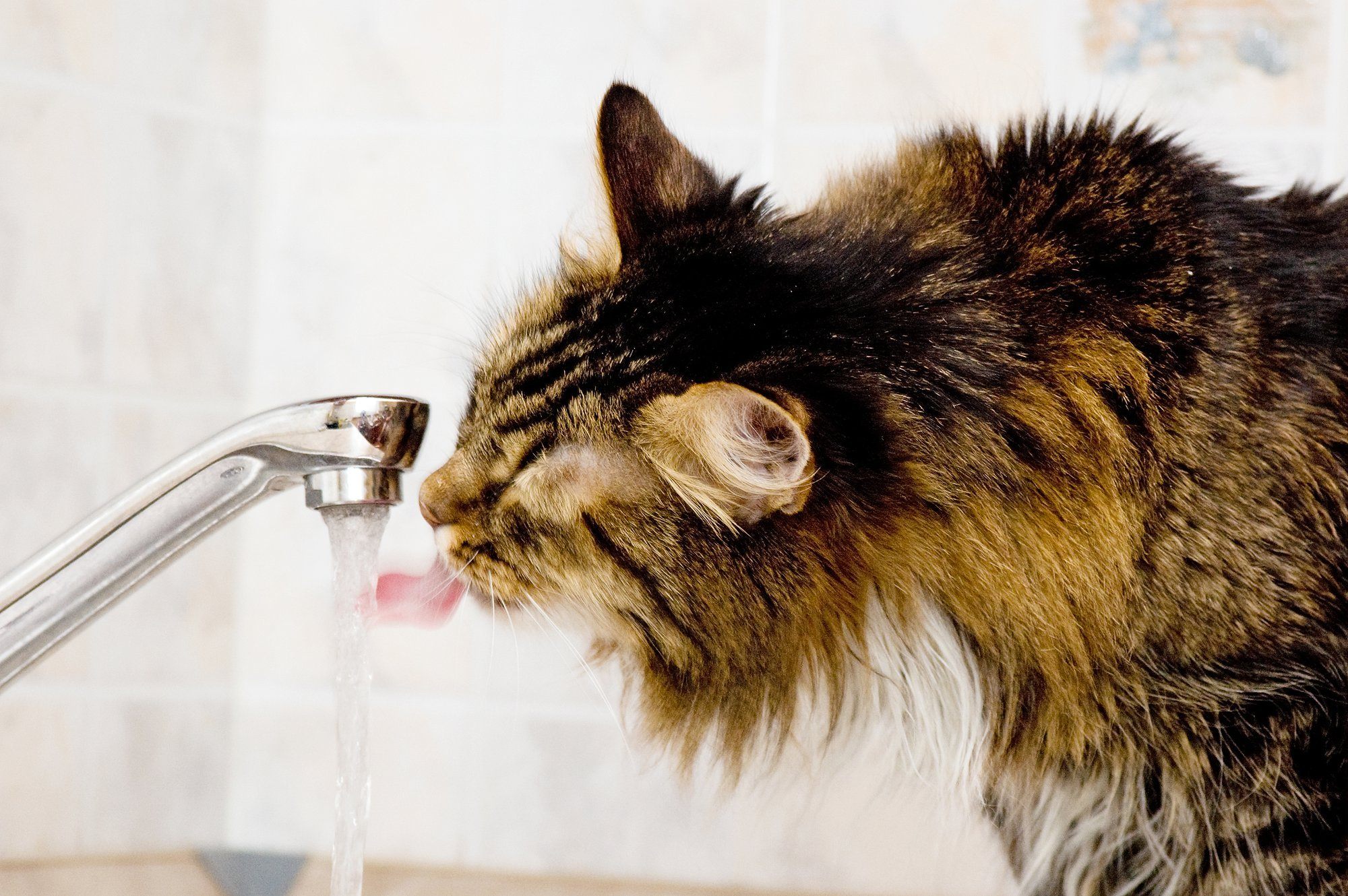February 19, 2020 |6 min read |Veterinarian Reviewed
What Is Polydipsia in Cats?

Written by

Is your cat drinking a lot of water? If you think that polydipsia might translate to "multiple dips" you'd be pretty much correct - as in multiple dips from the water bowl. This dipsy sounding word refers to constant or excessive drinking as a result of increased thirst, which may indicate an underlying condition that can be detected in health-monitoring kitty litter.
You might not notice it all at once. Maybe you're working on your laptop at the kitchen table when you notice your cat padding past you for the third or fourth time for a drink from his water bowl - even before you've had your second cup of coffee. You start to wonder what's up.
Did Felix have too many anchovies on his pizza? Or is this thirst, leading to excessive water consumption, a real cause for concern?
Learn more about the clinical signs that warrant the need to seek veterinary help when your cat develops insatiable thirst - and what you should do about it.
All About Excessive Drinking in Cats
Have you ever noticed cat diarrhea in a litter box and rushed to make sure your furry friend had enough water to rehydrate after being sick? If Kitty's had a recent bout of digestive upset - such as vomiting and diarrhea - chances are the increased water intake is due to a normal need to rehydrate after a great deal of water loss. When your cat continues to thirst more than usual over several days, the cause might be an underlying health condition.
However, there are several other cat health problems that can cause Fluffy to visit the watering hole on repeat.
As with humans, blood sugar problems like diabetes mellitus can cause excessive thirst in both female and male cats. When too much glucose builds up in the blood, the excess is excreted through more frequent urination. Resulting dehydration causes a person - or kitty - to drink more. Since cats often tinkle in private, you may only notice their increased thirst.
Some cats, especially senior ones, develop chronic kidney disease (CKD). It's a common, progressive condition that, according to vet Dr. Celeste Clements, affects three out of every ten cats. The key to improved survival and quality of life is recognizing the clinical signs of the underlying cause, the first of which are often excessive thirst and increased urination.
Hyperthyroidism is a common disease affecting cats of middle and older age. According to Cornell's College of Veterinary Medicine, the most common signs of hyperthyroidism are "weight loss, increased appetite, and increased thirst and frequent urination." Other, developing signs of the underlying cause may include their coat appearing "unkempt, matted, or greasy."
Lastly, urinary tract infections (UTIs) can occur in female and male cats of any age, though this affliction is less common in very young cats. Besides frequenting the water dish, your cat may display changes in urinary behavior like going outside the box, straining to urinate, or producing less urine.
Products like health-monitoring PrettyLitter can help you keep an eye on conditions such as a urinary tract infection, in addition to keeping an eye on your precious kitty's daily habits, mood, and behaviors.
These are a handful of conditions that could cause your cat to start wearing out the floorboards tiptoeing back-and-forth for a drink. Learning all about cats and their potential medical issues is a daunting endeavor, but as an informed pet-parent, you can take the best care of Fluffy by knowing what to watch out for.
Cat Litter That Prioritizes Their
Health & Your Happiness.
to get your first bag for only $14.99
Know When to Go to the Vet
If the weather is very hot or if Felix has been engaging in a mad display of acrobatics, he’ll understandably work up a healthy thirst. Heat and exercise aside, if your cat continues to pound the H20 with or without other symptoms, you should pay a visit to the vet.

If your vet recently prescribed a new medicine for your cat, be sure to inquire if it might be linked to your cat's increased water consumption. Drugs like diuretics can increase thirst, and the increased water intake can even be a sign of a dangerous side effect of pain meds.
Any condition that causes polydipsia, or excessive drinking in cats, may be serious and should be monitored or treated under veterinary supervision.

Keeping Up With Kitty
Cats are creatures of habit. When you notice a change in your cat's eating or drinking habits, urination or bowel movements, you may need to take a closer look at his health. That goes for cat behavior changes, too.
Your cat's vocalization can provide a clue that something's off. If Maximilian's meow sounds more plaintive than ever, something might hurt - or he might be feeling less like the King of the Jungle due to stress. Is your normally outgoing tabby spending his days hiding under the bed? Clingy calico more needy than usual? Wondering, why would a cat would stop eating since Fancy hasn’t even touched her food bowl in days?
Don't ignore your cat's potential need for different wet food, more attention, or professional help. Remember that your cat depends on you for his care.
Have questions about your kitty's increased drinking habits? Drop them in the comments below. We'll do our best to help!








